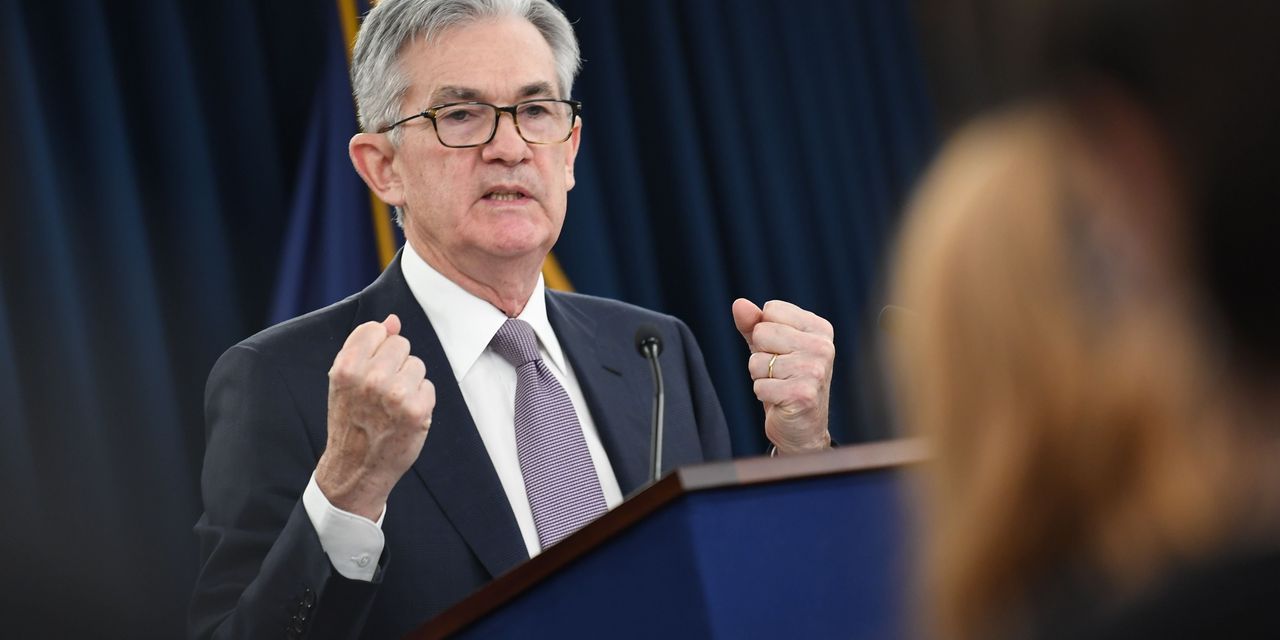A pivot is defined as a turn or a twist. Its safe to say there will be twists and turns on Wednesday as Fed Chairman Jerome Powell is widely expected to adopt a more hawkish stance in his postmeeting news conference Wednesday.
On display will be “the limits of Fed hawkishness,” said David Kelly, chief global strategist at JPMorgan Funds. Central bankers are often described as either inflation-wary hawks, eager to tighten monetary policy, or more growth-focused doves.
“Fed members have displayed their dovish feathers too often at this stage for us to mistake them for a flock of hawks,” Kelly said.
It is widely assumed the Fed will double the pace at which it is tapering its bond purchases at the end of the December Federal Open Market Committee meeting. The Fed is also expected to pencil in more rate hikes over the next three years.
Beyond those important headlines, here’s a look at open-ended questions whose answers will be key for economists and investors to understand the Fed’s true colors when policy makers conclude their two-day meeting Wednesday.
Stocks
DJIA,
-0.89%
SPX,
-0.91%
were lower on Monday ahead of the Fed’s decision. The yield on the 10-year Treasury note
TMUBMUSD10Y,
1.414%
was well below 1.5%.
Could there be a dovish taper?
Steve Englander, head of North American macro strategy at Standard Chartered Bank, sees the possibility of a dovish taper that ends in mid-April. At the moment, economists expect the Fed to reduce bond purchases by $30 billion a month, rather than the current $15 billion a month pace. Doubling the pace of the taper would end purchases altogether by mid-March. Englander argued that reducing purchases by $25 billion a month would gain the most support. The resulting mid-April end to purchases would be dovish because “the faster the taper, the faster investors are likely to expect subsequent [rate] hikes,” said Englander, in a note to clients.
What’s the forecast for next year?
Markets will key on what the Fed projects for the economy in 2022, according to Steven Ricchiuto, chief economist at Mizuho Securities USA. The Fed now sees the economy expanding at a 3.8% rate next year, and this could be revised lower. Inflation is forecast to drop to 2.2% in 2022. This should be raised. The Fed’s forecast for the unemployment rate — also at 3.8% — should hold steady, he said. Ricchiuto said that how much the Fed revises inflation up next year will be key for what the market will discount for rate hikes next year. At the moment, markets are discounting about 2½ rate hikes next year. How these projections are revised “will lead to a lot of conclusions about whether or not, in the market’s mind-set, two [rate hikes] becomes three or three [rate hikes] becomes four.”
Goodbye ‘transitory,’ hello…?
Powell has signaled that the Fed is going to delete the word “transitory.” How will the Fed describe the inflation outlook? Neil Dutta, head of economics at Renaissance Macro, believes the Fed will simply say inflation is “elevated” but not try to explain it away. Ricchiuto thinks Powell will try to describe inflation as a “one-time permanent adjustment in prices that doesn’t become an annual event.” Michael Gapen, chief U.S. economist at Barclays, thinks the Fed will settle on “persistent.” At the November Fed press conference, Powell said: “certainly we should see inflation moving down by the second or third quarter.”
See: El-Erian says Fed use of ‘transitory’ to describe inflation was its worst call ever
How many rate hikes exactly?
In September, the Fed’s so-called dot plot, which tracks individual policy makers’ expectations for future rate moves, penciled in a total of six hikes by the end of 2024, bringing its benchmark rate up to 1.8%. Analysts now expect the Fed to boost the number of rate hikes up to a total of nine over the same period. That would place the median dot close to the Fed’s assessment of the neutral rate of 2.5% — where Fed policy is neither helping the economy expand or trying to slow it down.
Any change in the forward guidance about rate hikes?
An open question is whether the Fed will feel the need to change the language that set out conditions for the first rate increase. Ricchiuto thinks it is too soon for the Fed to change the guidance. Currently, the Fed has said benchmark rates will remain near zero until labor market conditions have reached full employment and inflation has risen to 2% and is on track to exceed 2% for some time. Fed officials have said the latter two conditions are satisfied. “If the FOMC feels the need to update this language, it will probably do so by putting more emphasis on the labor market as a catalyst for liftoff,” said Roberto Perli, head of global policy at Cornerstone Macro.
What to do about the balance sheet?
Economists will be listening to whether Powell gives any guidance on how much benchmark short term rates need to be raised before officials start tightening by allowing the balance sheet to shrink. “We don’t expect a clear signal yet,” said Jim O’Sullivan, chief U.S. macro strategist at TD Securities. In the last cycle, the Fed started shrinking the balance sheet when short-term rates reached the 1%-1.25% range.
